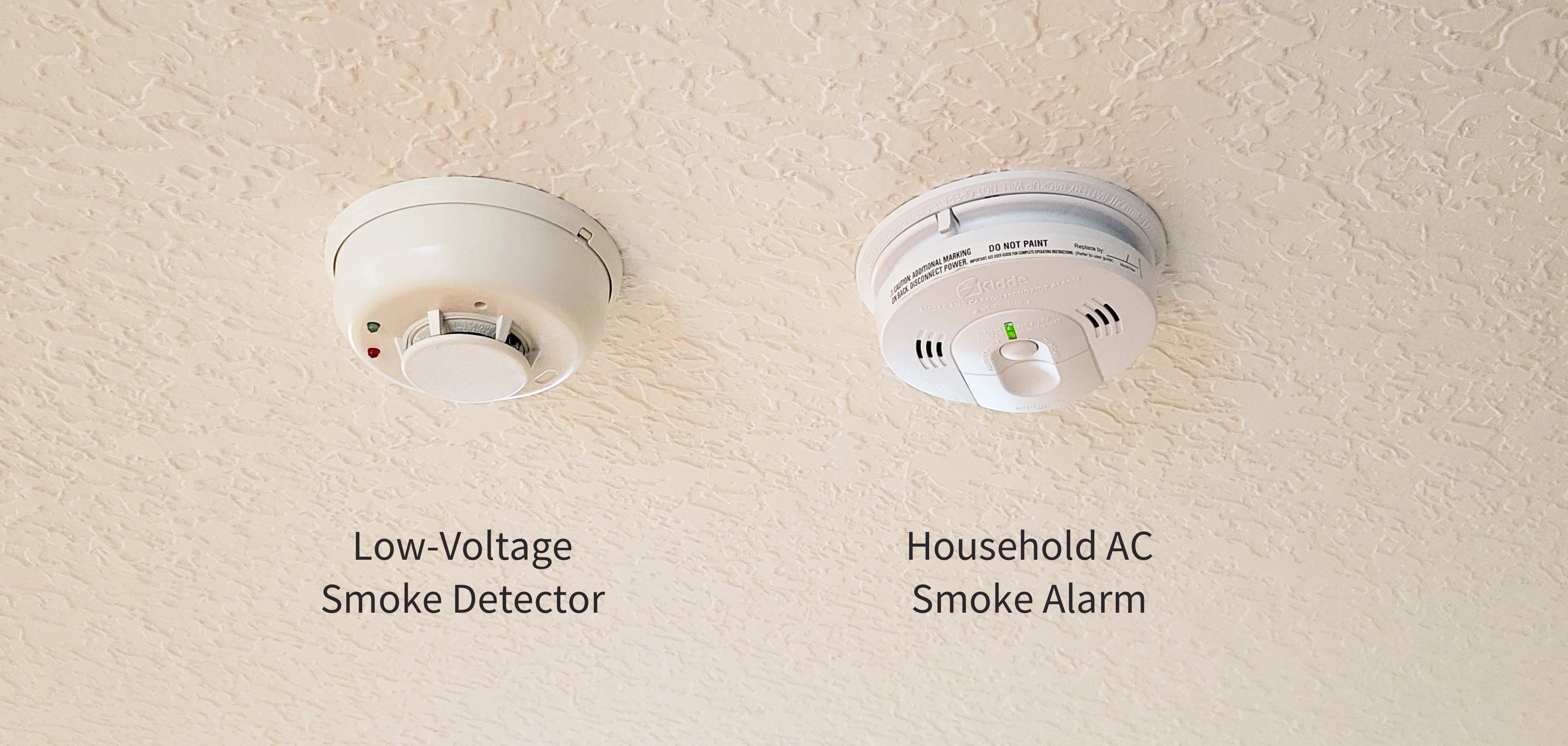Wiring Smoke & Carbon Monoxide Detectors
DO NOT USE KONNECTED WITH CRITICAL FIRE AND LIFE SAFETY EQUIPMENT
Konnected is NOT designed for use with fire and life safety equipment, and CANNOT be used to alert you in a life threatening emergency.
Unlike traditional self-contained burglar and fire alarm systems, Konnected depends on power, WiFi/network, and third-party software and services to function properly. It is not failproof! Do not use Konnected with smoke or carbon monoxide detectors unless they will independently work in an emergency even if Konnected is not functioning.
Informational Use Only
Use of the Konnected product with smoke or CO detection devices is intended for ancillary notifications and/or automation functions when used with home automation software only. Konnected must NOT used as method to alert the occupants of a building in a smoke, fire or carbon monoxide emergency.
Konnected is NOT certified or listed by any nationally recognized testing laboratory in the U.S. or other countries for smoke & fire safety monitoring equipment. This product should NOT be used when UL Listed equipment is required.
Acceptable Use
The Konnected Alarm Panel should never be used as a primary method of powering or alerting on smoke or carbon monoxide detection devices when these devices are required for life safety.
However, Konnected can add value to traditional smoke and CO detectors when used with home automation software in the following acceptable use cases:
- Use with household AC powered smoke alarms that have a built-in audible alarm, backup battery, and a manufacturer approved relay for ancillary device connections.
- Use with directly connected low-voltage smoke detectors as ancillary devices when the home or property has other separately powered/connected smoke/CO alarm(s) that independently meet minimum required building and safety codes.
- Use in locations where life safety is not a concern and local regulations do not require listed fire detection equipment (for example, an unoccupied storage unit).
What You Can Do
Here are some examples of what you can do with Konnected when safely integrated with smoke or CO detectors:
- Send SMS or push notifications when smoke/CO is detected.
- Automatically turn off HVAC equipment or fans (with a smart thermostat or fan switch) when smoke is detected.
- Automatically turn on lights (with smart lighting) when smoke/CO is detected.
- Notify Noonlight when smoke/CO is detected.
Types of Smoke Detectors

Two smoke detectors right next to each other? This is not uncommon in newer construction homes in the U.S. There are two main types of smoke detectors and alarms, and your house may have both.
Household AC-Powered Smoke Alarms
In the United States, most homes will have hardwired smoke alarms connected to household 110-120V AC power because it's usually required by building code. The main purpose of these smoke alarms is to beep loudly to alert the occupants of the home in the event of an emergency.
Connecting Hardwired AC-Powered Smoke Alarms
Low-Voltage Smoke Detectors
These smoke detectors are designed to be connected to a fire alarm panel on the property and are powered by DC voltage (usually 12-24V). Very often, these smoke detectors do not have a built-in alarm, so they can't be used to independently alert you in an emergency without an appropriate fire alarm panel.
Connecting Low-Voltage Smoke Detectors
Why do I have both?
Newer homes may have both types of smoke detectors. Usually there are hardwired AC smoke alarms in every bedroom and living area to meet the minimum requirements for fire safety. If a home is pre-wired for an alarm system, often the alarm installer will install an additional low-voltage smoke detector that can be connected to an alarm system so that he can sell you a fire alarm monitoring contract.
Safety Check
Before starting on a do-it-yourself smoke alarm wiring project, consider a few important safety things:
- How old are your smoke alarms?
Smoke detectors should be replaced every 10 years according to the U.S. Fire Administration. Chances are pretty good that your smoke alarms are older than that. If they are, that's ok, they're fairly easy to replace. - Were they connected to your old alarm panel?
Your smoke alarms may or may not already have a connection to your old alarm panel. Most of the time, household AC-powered smoke alarms are not connected to alarm systems, but low-voltage detectors are. - Do your smoke detectors have a built-in alarm?
You MUST ensure that the smoke detectors will be able to alert you in an emergency via a built-in sounder. Some models of alarm system smoke alarms do not have a built in sounder, and these cannot be used with Konnected. - Check local code compliance.
You are responsible for complying with all building and fire codes in your area. Minimum required fire safety codes apply to most residential structures in the U.S., and Konnected CANNOT be used to meet required fire safety requirements.
Testing Smoke Detectors
It is critical that you test your smoke detectors after re-wiring. Do not just assume it's working!
- Follow the smoke detector's instruction manual for testing procedure. Ensure that the sounder sounds and that Konnected is properly signaled in an alarm.
- Use canned smoke or very carefully use real smoke to test the smoke detection capability. Some detectors with heat detection capability can also be triggered with a hair dryer on the hottest setting.
- Test the maximum power of the system by triggering the siren and the smoke alarms at the same time. Ensure that the system does not shut down due to insufficient power.
- If you have multiple interconnected smoke detectors, ensure that they all alarm when one alarms.
- Test a power failure scenario and ensure that the smoke alarms still operate and notify you when power is out.
Next Step: Wiring Glass Break Sensors